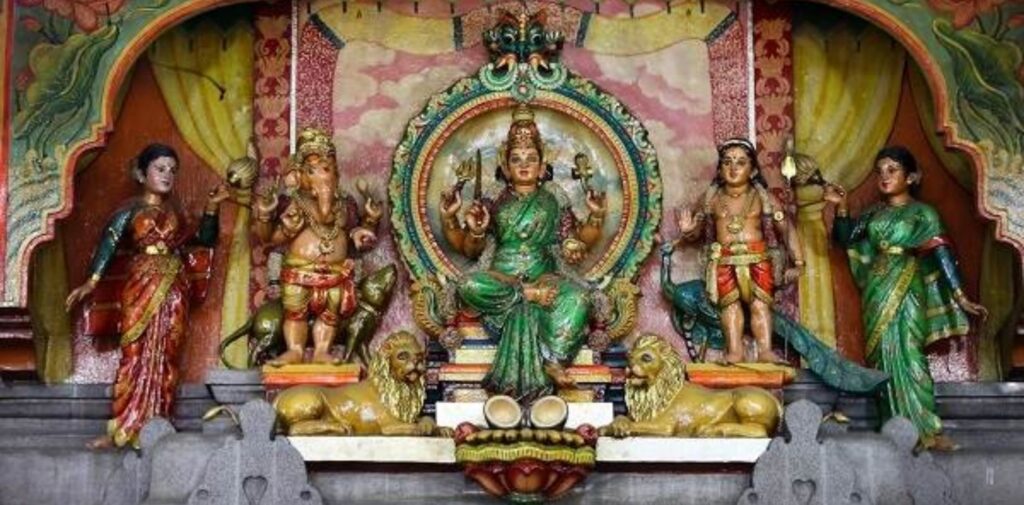India is a land rich in culture, religion, and history. Spread of Hinduism and Buddhism These religions not only shaped the life of people in India but also reached far beyond its borders. While many factors contributed to their spread, trade played an important role in helping these religions travel to different parts of the world. Let’s take a closer look at how trade helped spread Hinduism and Buddhism.
Early Trading in India
Before we understand how trade helped spread Hinduism and Buddhism, it’s important to know a little about how trade worked in ancient India. India has always been a land of resources, culture, and knowledge. Traders from different parts of the world came to India to exchange goods like spices, textiles, and precious stones. They traveled by land and sea, connecting India with other countries.
This trade didn’t just involve goods. It also became a way for people to exchange ideas, beliefs, and cultures. As traders and travelers moved between places, they also spread stories about their religions, customs, and beliefs.

Spread of Hinduism through Trade
Hinduism, one of the oldest religions in the world, began in India. It is based on the belief in many gods and goddesses, the importance of karma, and the idea of rebirth or reincarnation. As India’s trade network expanded, Hinduism began to spread to other parts of Asia, including Southeast Asia.
Trade Routes to Southeast Asia
One of the most important trade routes for the spread of Hinduism was the maritime route across the Indian Ocean. Indian traders and sailors traveled from the western coast of India to the islands of Southeast Asia, including places like Sri Lanka, Indonesia, and Malaysia. They traded items like spices, silk, and precious metals. Along with these goods, they also brought with them their religion, culture, and way of life.
These traders shared stories about their gods, temples, and rituals, which slowly became part of the local traditions in the lands they visited. Over time, rulers in Southeast Asia, such as those in Cambodia, Indonesia, and Thailand, began to adopt Hindu beliefs. Hindu temples were built, and Hindu gods like Shiva and Vishnu were worshipped in these countries.
The Role of the Kings
Many kings in Southeast Asia were deeply influenced by Hinduism, often because of their contact with Indian traders. These kings began to see the value of Hindu culture, and they adopted it in their own kingdoms. For example, in Indonesia, the famous kingdom of Srivijaya was known for its strong connection to Hinduism. In Cambodia, the Angkor Wat temple, one of the largest religious monuments in the world, was built as a Hindu temple to honor the god Vishnu.
The Spread of Buddhism through Trade
Buddhism, another religion that began in India, spread in much the same way as Hinduism did—through trade routes. Buddhism was founded by Siddhartha Gautama, known as the Buddha, around the 6th century BCE. His teachings focused on finding peace and happiness through understanding the nature of suffering and following a path of kindness, meditation, and wisdom.

The Silk Road and Buddhist Monks
One of the most important trade routes for the spread of Buddhism was the famous Silk Road. The Silk Road was a network of trade routes that stretched from China, through Central Asia, and into the heart of India. Along this route, goods like silk, tea, and spices were exchanged, but so were ideas and religions.
Buddhist monks traveled along the Silk Road, carrying the teachings of the Buddha with them. As these monks visited different lands, they shared Buddhist ideas with the people they met. Soon, Buddhism began to spread beyond India to countries like China, Korea, Japan, and Central Asia.
Buddhism appealed to many people because it offered a way to find inner peace and happiness, without focusing on the worship of gods like in Hinduism. People were drawn to its simplicity, and it grew in popularity across Asia.
Buddhism Reaches China
China was one of the first countries outside India to adopt Buddhism. Buddhist monks traveled to China along the Silk Road, bringing their scriptures and teachings. The Chinese were fascinated by the new ideas about meditation, peace, and enlightenment. Over time, many Chinese people converted to Buddhism.
The spread of Buddhism in China also led to the development of new schools of thought, like Chan Buddhism (which later became Zen Buddhism in Japan). Chinese rulers, such as Emperor Ashoka of India, also supported Buddhism and helped it grow.
Buddhism in Central Asia and Beyond
As Buddhism spread to Central Asia, it became especially influential in countries like Afghanistan and Iran. The rulers of these regions embraced Buddhism, and Buddhist art, architecture, and culture became important in the region. In fact, the famous Bamiyan Buddhas, giant statues carved into the cliffs of Afghanistan, were created during this time.
Later, Buddhism spread to countries like Korea, Japan, and Vietnam. It was brought by travelers, scholars, and monks, and it found a home in these countries, where it evolved into different forms.
The Influence of Trade on Cultural Exchange
Apart from spreading religion, trade also helped spread many other cultural elements between India and the countries it traded with. Art, language, and literature were exchanged along with goods. In many parts of Southeast Asia, the influence of Indian art and architecture can still be seen in the temples and monuments that were built. For example, the grand temples of Angkor Wat in Cambodia were inspired by Hindu and Buddhist designs from India.
Trade also brought the Indian language, Sanskrit, to many parts of Asia. Sanskrit was the language of Hindu and Buddhist scriptures, and it influenced many languages in Southeast Asia, including Thai, Khmer, and Indonesian.

The Role of Buddhist Monasteries
Buddhist monks and their monasteries were key players in spreading Buddhism along trade routes. These monks traveled from India to Central Asia, China, and beyond, often stopping at major trading cities along the way. They would stay in these cities for a while, teaching people about Buddhism, performing religious ceremonies, and building monasteries. These monasteries became centers of learning, where not just religious texts, but also knowledge about science, medicine, and philosophy, was shared.
In many places, these monasteries acted as cultural hubs, helping to preserve and pass on the teachings of the Buddha. Over time, the influence of Buddhism became so strong that entire countries, like Thailand and Sri Lanka, adopted it as their main religion.
Conclusion – Spread of Hinduism and Buddhism
Trade played a huge role in the spread of both Hinduism and Buddhism. It was through the exchange of goods, ideas, and cultural practices along trade routes like the Silk Road and the Indian Ocean that these religions traveled far beyond India, reaching countries all over Asia.
Hinduism spread through the efforts of traders and kings who adopted the religion, while Buddhism spread through the travels of monks who shared the teachings of the Buddha. Both religions shaped the cultures of many countries and continue to influence millions of people around the world today.
By traveling along trade routes, these religions became global forces that helped bring people together through shared beliefs, peace, and knowledge. The legacy of trade in spreading these religions shows how powerful cultural exchange can be in bringing about understanding and unity among different peoples.




